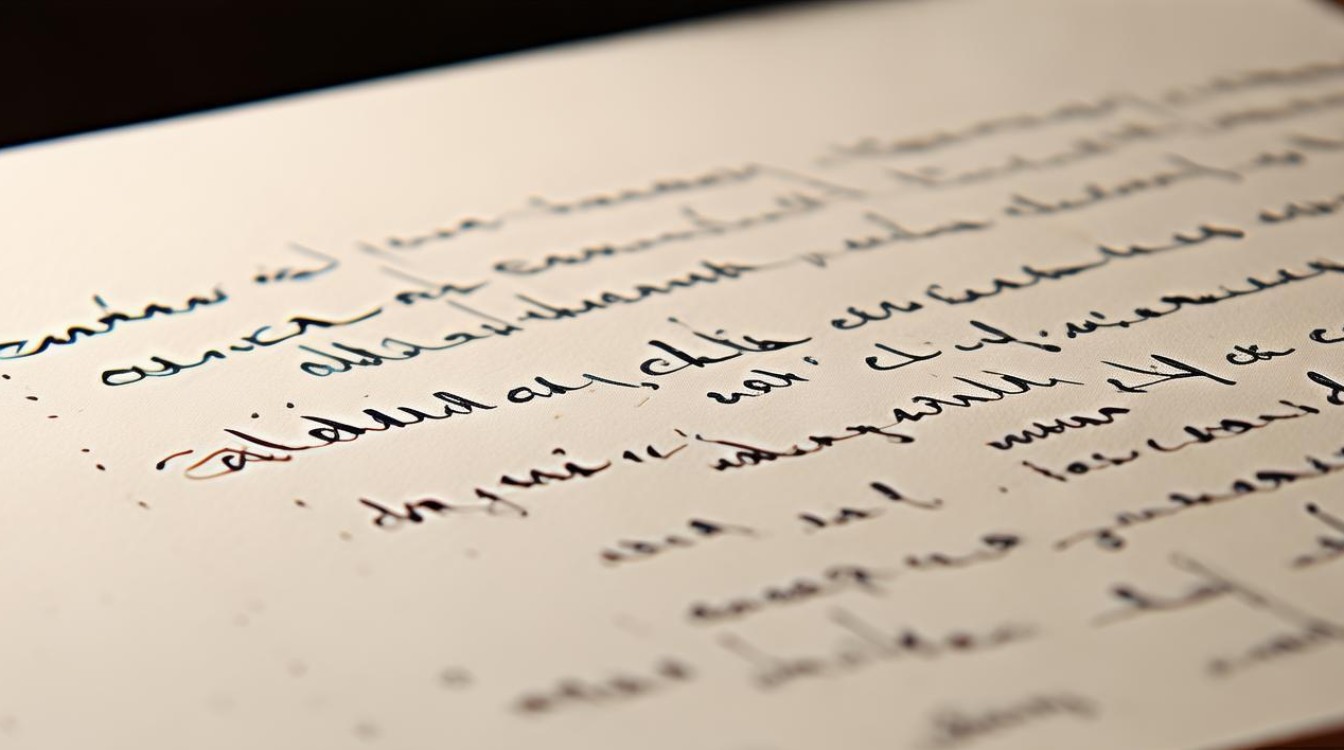在雅思口语考试中,考生常被问及与日常生活相关的话题,handwriting”(手写)作为一个高频词汇,不仅考察词汇运用能力,更涉及文化习惯、个人经历等深层次表达,本文将从手写的现状、个人经历、文化意义及未来趋势四个维度展开,结合具体场景与例句,帮助考生全面掌握相关表达,提升口语回答的丰富性与逻辑性。

手写的现状:数字化时代的传统技艺
随着智能手机、平板电脑等电子设备的普及,手写逐渐被键盘输入取代,在雅思口语中,考生可对比手写与电子输入的优缺点,展现辩证思维。
- 优点:手写有助于记忆(handwriting aids memory),如记笔记时手写比打字更能加深理解;情感表达更真挚(handwriting conveys emotion),手写信件比电子邮件更有温度。
- 缺点:效率较低(less efficient),长篇文字手写耗时;规范性不足(lack of uniformity),字迹潦草可能影响沟通。
场景应用:当被问“Do you often write by hand?”时,可回答:“Yes, but mostly for short notes like shopping lists. For longer texts, I prefer typing as it’s faster. However, I still believe handwriting has a unique charm that digital tools can’t replace.”
个人经历:手写的情感与记忆
个人经历类话题是雅思口语的重点,考生需结合具体事例展开。
- 学生时代:描述用钢笔抄写课文(copying texts with a fountain pen)的经历,强调手写对专注力的培养。
- 特殊时刻:提及手写贺卡(handwritten greeting cards),如生日时为朋友制作卡片,体现用心与情感。
词汇拓展:
- 书法:calligraphy
- 字迹:penmanship
- 练习本:exercise book
例句:“When I was in primary school, my teacher made us practice calligraphy every weekend. At first, I found it tedious, but gradually, I fell in love with the art of forming each stroke carefully.”
文化意义:手写背后的社会价值
不同文化中,手写承载着独特的社会意义,考生可结合文化差异展现知识储备:
- 中国:书法(calligraphy)是传统艺术,被誉为“无言的诗、无行的舞”;春节时手写春联(handwritten Spring Festival couplets)是重要习俗。
- 西方:签名(signature)是法律效力的象征,手写签名在合同、支票中不可或缺;感谢卡(thank-you notes)是礼仪传统。
对比表达:
“In China, calligraphy is not just a skill but a reflection of one’s personality. In contrast, Western cultures often emphasize signature authenticity, where a handwritten signature validates legal documents.”
未来趋势:传统与科技的融合
尽管数字化趋势明显,手写并未消亡,而是以新形式存在,考生可探讨科技如何与手写结合:
- 数字手写笔:如Apple Pencil,结合手写习惯与电子设备的便捷性。
- 手写识别技术:OCR(光学字符识别)可将手写内容转化为文本,提升效率。
观点提炼:“While digital tools dominate, handwriting is evolving. For instance, digital planners allow handwritten notes with cloud sync, merging tradition and technology seamlessly.”
雅思口语高分技巧
针对“handwriting”话题,考生需注意:
- 词汇多样化:避免重复使用“write”,可用“pen”, “scribble”, “jot down”等替代。
- 逻辑连接:使用“however”, “moreover”, “in addition”等衔接观点,使回答更连贯。
- 细节补充:具体描述场景,如“using a gel pen with blue ink”比简单说“writing with a pen”更生动。
表格:手写相关词汇分类
| 类别 | 词汇示例 |
|--------------|-----------------------------------|
| 工具 | pen, pencil, marker, stylus |
| 动作 | scribble, draft, annotate, sign |
| 场景 | diary, letter, form, worksheet |
| 评价 | neat, legible, sloppy, elegant |
FAQs
Q1: 雅思口语中如何描述“字迹潦草”?
A1: 可用“My handwriting is often described as ‘sloppy’ or ‘illegible’ because I tend to write quickly when taking notes. However, I try to make it neat when writing important documents like cards.”
Q2: 如何对比“手写”与“打印”在考试中的优缺点?
A2: “Handwriting allows flexibility for diagrams and quick edits, which is useful for IELTS writing tasks. Typed responses, however, look neater and avoid issues with illegibility. In exams, I prefer handwriting as it’s more accessible and doesn’t require technology.”











